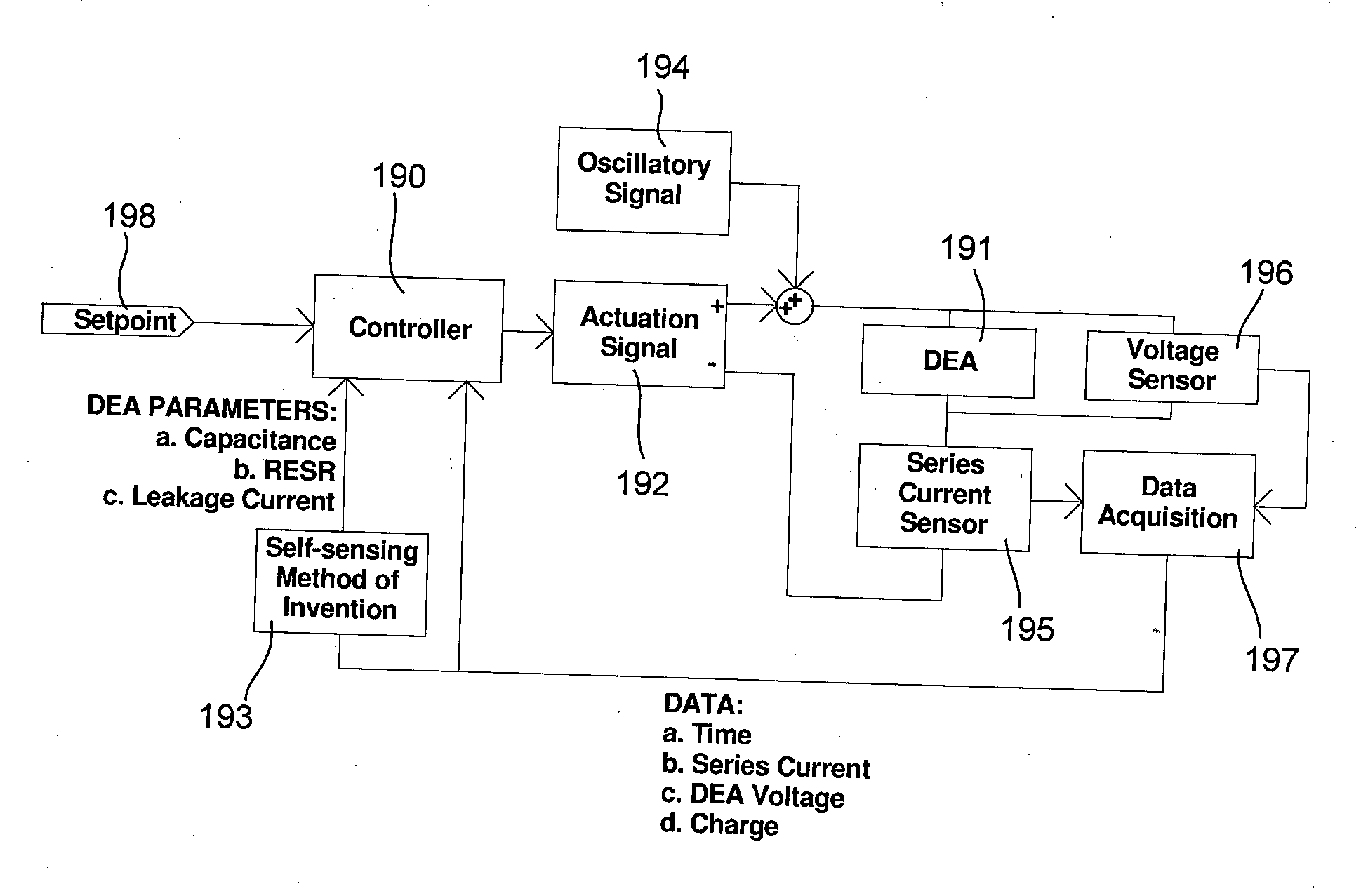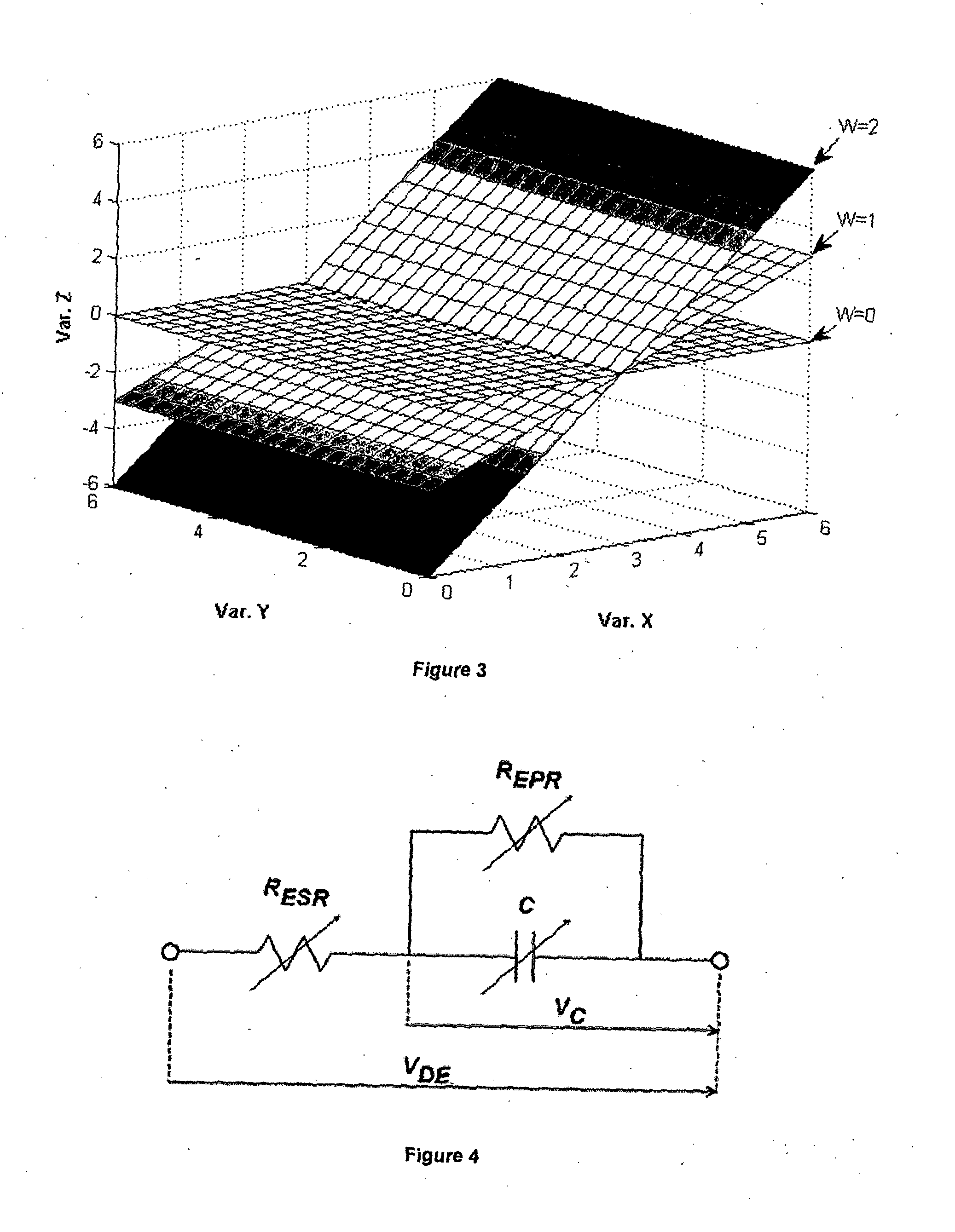Dielectric elastomer self-sensing using plane approximation
a dielectric elastomer and self-sensing technology, applied in the direction of piezoelectric/electrostrictive device details, instruments, device details, etc., can solve the problems of unnecessarily inhibiting the motion of dea/deg, increasing the cost and mass of the device, and limited information regarding the electromechanical state of the de itsel
- Summary
- Abstract
- Description
- Claims
- Application Information
AI Technical Summary
Benefits of technology
Problems solved by technology
Method used
Image
Examples
second example embodiment
[0131]According to a second embodiment described below by way of a further example of the method of the present invention, the method involves deriving data regarding three variables comprising two electrical characteristics of a dielectric elastomer (DE), and time. These three variables are defined as orthogonal x-, y- and z-axes forming a three-dimensional space, and a plane of best fit through the data therefore comprises a plane.
[0132]This second example of the invention will be described below with respect to application of the method in relation to a dielectric elastomer actuator (DEA) system. However, the method may be similarly applied for a dielectric elastomer generator or sensor.
[0133]The DEA system uses Pulse Width Modulation (PWM) control of the input current (the actuation signal) to simultaneously actuate the DEA and introduce a small-scale oscillation to the voltage difference between the DE electrodes. This enables the capacitance of the DEA, leakage current through...
PUM
 Login to View More
Login to View More Abstract
Description
Claims
Application Information
 Login to View More
Login to View More - R&D
- Intellectual Property
- Life Sciences
- Materials
- Tech Scout
- Unparalleled Data Quality
- Higher Quality Content
- 60% Fewer Hallucinations
Browse by: Latest US Patents, China's latest patents, Technical Efficacy Thesaurus, Application Domain, Technology Topic, Popular Technical Reports.
© 2025 PatSnap. All rights reserved.Legal|Privacy policy|Modern Slavery Act Transparency Statement|Sitemap|About US| Contact US: help@patsnap.com



